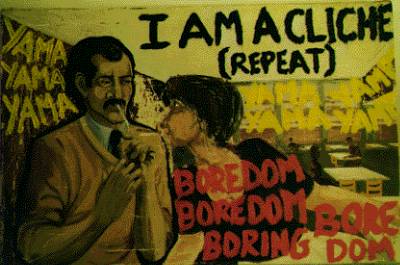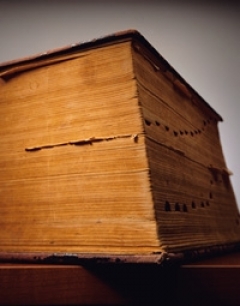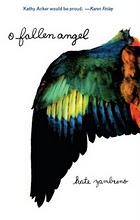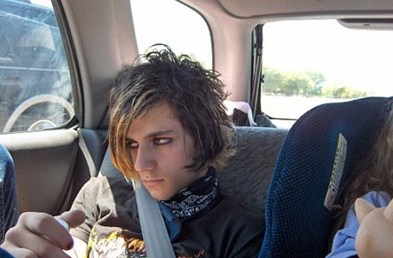Consider this a PS to this morning’s roundup: Emily Gould’s And the Heart Says Whatever, written by Eryn Loeb for The Rumpus. It’s not a review, exactly, and neither is it quite a personal essay (it’s also not quite not one) but it is both clear-eyed and well-intentioned, which is more than can be said for most of what’s been written about And the Heart (cf. Ana Marie Cox in Bookforum, which Loeb discusses at some length).
Lassoing Up Tuesday

James Yeh interviews Diane Williams at The Faster Times.
At The Rumpus, Elissa Bassist wonders, have I earned these cliches?
In a belated look at the NYTBR, the great Harold Bloom reviews a book about the history of anti-Semitism in English literature, Adam Kirsch looks at two books about Heidegger, and Rebecca Newberger Goldstein writes a satire on Theory, in the style of Borges.
io9 rounds up 35 titles for “The Essential Posthuman Science Fiction Reading List.”
The Nation has a new website! Learn about what’s different here, and about their decision to open source here. Kudos and congrats, guys!
Speaking of new websites, n+1 has one, too. The present feature is new fiction by Dy Tran “about” donuts.
A new issue of the Home Video Review of Books!
And last but absolutely not least, the new issue of Propeller features an interview with Kevin Sampsell, one with yours truly, a review of the latest Nicholson Baker, and a whole bunch of other treats besides. Check it out.
Variations on Reading
 I’m reading some books, sure. We’re always reading books, right? But for some reason, right now, I happen to be reading very big books and very small books. And that’s been the case for the past few weeks. Books are either 800+ or -150 pages. That being the case, I wanted to talk about the different experiences in reading big v. small books.
I’m reading some books, sure. We’re always reading books, right? But for some reason, right now, I happen to be reading very big books and very small books. And that’s been the case for the past few weeks. Books are either 800+ or -150 pages. That being the case, I wanted to talk about the different experiences in reading big v. small books.
NEW MARTIN AMIS
“This remarkably tedious new novel by Martin Amis…” Awesome. If Kakutani hates it, there’s a pretty good chance I’ll love it. Only Liesl Schillinger, whose sour-smug review of Peter Hoeg’s magnificent The Quiet Girl breezily and speciously claimed its narrative “lurches toward pedophilia,” annoys me more as far as NY Times reviewers go. Can’t wait!
What exactly does [Andrew Sullivan] think is going to happen now? Does he imagine that Kagan, in an uncharacteristically un-butch moment, is going to break down in front of Orrin Hatch and tearily confess to having cloistered away a secret lesbian lover in some Cambridge bat cave because she was worried that Alan Dershowitz would be really really mean to her about it? Because that would go over really well for gay rights–what a role model!–never mind Kagan’s confirmation.
lokes in damp 3 hotos
1. Neil from ESPN has been emailing me. And he says, “In short: We’re inviting folks to submit (to fictioncontest@espnthemag.com) sports-themed short stories of up to 3,000 words, and the best story (as picked by me and the editor of Stymie) will run in a future issue of ESPN. Then comes the fame and fortune, naturally.”
If you have a sports story, send it. Deadline is June 1st.
2. I just got an iPhone. Why should writers care? What can I do now besides take notes and commit “Douche baggery in a mesmerizing false flame.”
3. This invisible bookshelf is like emo-in-a-seatbelt badass.
Old boys
It’s recently come to my attention that HTML Giant is an “old boys club,” or at least, that’s what I’ve been told. So here’s my problem: if commenters are right and HTML Giant is an old boys club, then what role do the women have on this site? I mean, I read HTML Giant pretty faithfully, and I have since long before I was contributor, and I’ve always thought the women play a very significant role. Their posts are thoughtful, funny, often profound. So wtf? If anything, calling HTML Giant an old boys club denigrates the women who post here and the women who read here. And that’s what I think.
Murderous Fucking Murderous: An Interview with Kate Zambreno
Kate Zambreno go es for the throat. Or at least her language does, in the manner of those who came to wreck not by demanding, but by will. Her debut novel, O Fallen Angel, (which won the Chiasmus Press ‘Undoing the Novel’ contest) arrives in the grand spirit of Acker, Artaud, Burroughs, but where these are A and A and B, Kate is Z in full: her own, slick, squealy, and of another light. As well: Fun, funny, fucked, freaklit, surprising, terrifying, gorgeous. Her words are a meat we surely want more of, quickly.
es for the throat. Or at least her language does, in the manner of those who came to wreck not by demanding, but by will. Her debut novel, O Fallen Angel, (which won the Chiasmus Press ‘Undoing the Novel’ contest) arrives in the grand spirit of Acker, Artaud, Burroughs, but where these are A and A and B, Kate is Z in full: her own, slick, squealy, and of another light. As well: Fun, funny, fucked, freaklit, surprising, terrifying, gorgeous. Her words are a meat we surely want more of, quickly.
On the event of her book’s release (which you can pick up now through SPD) (and read an excerpt of at The Collagist) (and see read live in Chicago this Saturday at Quimby’s), Kate and I spent some time discussing via email her new book, her influences, art, language, terror, cliches, Playboy, Bacon, body fluids, and all things therein.
* * *
BB: The copy of the back of O Fallen Angel says it was inspired by Francis Bacon’s Three Studies for Figures at the Base of a Crucifixion. The images in that painting are quite striking, esp. in that I didn’t look it up until after the text. The orange and white contrast, with the odd body shapes on pedestals as if vivisected and mutated bits of humans stuck on gross smooth forms really resonated in retrospect with the three rotating voices of your text, and made me realize a lot about it in seeing, applying the imagery to the residual effect of your words. I wonder if you could talk about how that image struck you as a way of opening the door here, what effect it had in a process sense, and perhaps how it continued to inform the structure or tone of the book.
Kate Zambreno: I’ve been really haunted by that triptych. For a while I lived in London, really when I first started writing I worked in fiction at Foyle’s bookshop and read all of this experimental fiction for the first time—Ann Quin and Elfriede Jelinek and all the Peter Owen books, Jane Bowles, Anna Kavan—and ran the cult fiction section. I would go to the Tate Museums to the Francis Bacon room in the Tate Britain where they had that first major triptych. I worshipped and gawked at that first triptych, that orange gruesome horror it filled me with such violence and ecstasy. Those three gruesome distorted bodies, the open mouths in Bacon, the silent scream. I’m really interested in the silent scream how we are muted in society, Bacon’s mouths, Helene Weigel’s mouth wide open screaming an empty loss in Mother Courage, Munch’s Scream. I guess that’s some of what I was writing towards in O Fallen Angel, what I’m really always trying to write towards, those who are dumb and deaf but inside writhing with unwordable agony, and are diagnosed as selectively mute, those who lack language so they commit violent acts, they are only given language that is banal and well-behaved , the need to burn burn burn but they cannot so they set fire to themselves, they self-immolate (as one of my characters does literally and the other does symbolically). The spectacle of this, of the wound, to borrow an idea from Mark Seltzer’s cultural study of the serial killer. And we gather around this wound, this trauma in our talk-show society, but then we also suppress it, the anguish, sadness, we medicate it. I also really love how much a reader Bacon was and we both share a passion for the Greeks, the Greek tragedy really inspired O Fallen Angel, especially The Oresteia, the choruses threaded, some of the imagery, and Malachi is a Cassandra figure, ranting, raging, never believed.


